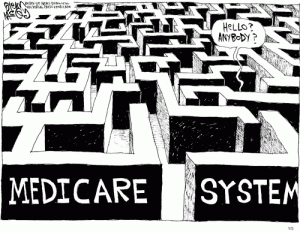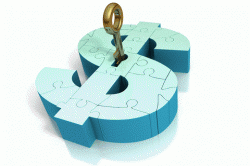Dr. Leslie Kernisan asks the question, does sensor technology bring value to seniors?
What problems will activity monitors help solve?
As far as I can tell, these types of activity monitors mainly address the following problems:
- Families feeling anxious about how an older person is doing.
- Activity monitors will let families know if the person is not moving around the home — or using applicances — as usual.
- Older adults don’t like having to frequently tell their families that they are ok, or mind calls to check on how they are doing.
- If activity monitors can be relied on to flag a change in status, then phone conversations can instead focus on telling stories, or other conversations that don’t highlight anyone’s anxieties about aging, safety, and possible decline/disability.
It’s also possible that these devices might help older adults feel more secure, knowing that someone will be alerted if they significantly change their activity pattern. Is there clinical data on how activity sensors in the home actually affect outcomes and quality of life? I took a quick look in the literature and did not find much on outcomes, although I did come across this nice article in The Gerontologist which reviews some issues that clinicians should consider when advising families re smart home technologies. (The author mentions assisting with information gathering, ensuring comprehension, and ensuring voluntariness.) Back to the original question: will activity sensors in the home be helpful to older adults as they age? Hard to say. The idea of smart homes and connected independence is compelling. And there is something to be said for products that provide some peace of mind. But presumably everyone is also assuming that when these monitors flag a change in activity, someone, somehow, will intervene in such a way that allows the older person to live a better and more independent life. In other words, along with reassurance, it seems to me that these products are implying greater safety for our older loved ones. (Kind of the way that those infant sleep monitors imply reduced risk of SIDS when in fact there is no evidence to support this.) Here, I have to say that I’m a bit skeptical, and if a family asked me for ways to help keep their older loved one safer at home, I might first suggest things like assistance with medication (so many elders are on unnecessary and dangerous medications! and so many elders need to take certain medications daily in order to feel their best), optimizing physical function, reducing fall risk, social activities, and arranging for proper support of ADLs and IADLs. Come to think of it, if you want to monitor activity, why not wire up a medication dispenser, so that you can follow the activity pattern while still helping an older person and her clinical team manage the medication plan? Bottom line: If an activity monitor isn’t too expensive, it seems reasonable to give it a try and see if it feels helpful. Family caregivers are often quite anxious to know how a loved one is doing, and anything that helps them cope with worry and the other challenges of caregiving should be taken seriously. However, I hope families won’t have overly inflated expectations of safety benefits, unless research demonstrates that outcomes other than anxiety are improved. This article was first published at: http://www.geritech.org/ What is your impression of sensor technology in senior housing? Are you using it? Is it effective? What else would you like to see?








From LinkedIn groups
Sensor technology in seniors. Our biggest sensor that we have, our whole life is our brain.
We are born with five senses. However, for the sake of discussion I will limit this post to the sense of sight. The brain is feed much of its information with this sensor of sight. Research has shown the importance of sight on the activity in the brain.
I make this first point to address this post because the senors that most of us think of when we talk of technology sensors, we are talking about devices outside the body. These new external sensors can denote movement, time in one location, falls, vital signs and much more, when the senor is not within direct observation in person or remotely.
I have an external device which every senior can have and knows how to use, which can make their internal sensor, their brain, work much better. This device is called a videophone. This device increases the art of communication 20 fold. When we can see the person we are talking to, the science of communication precent goes from 5-7% to 93-95%.
By Eric I Mitchell MD MA FACPE CPE
From LinkedIn Groups
Careful — this discussion will evoke debate on privacy v. efficiency and the criticism isn’t pretty…just a warning from the scout who stepped on a landmine.
By F. Todd Winninger
From LinkedIn Groups
Todd’s right. There’s a lot of feeling out there that these invasive systems should not sure as substitutes for caregivers. My feeling is that you have to look at each situation.
By Lorie Eber
From LinkedIn Groups
Noninvasive sensors can be very helpful. They are monitored by nursing staff, home health nurses, or family. WellAware Systems has this service available. They educate staff and or families about interpreting the information and can actually tell what kind of sleep they are getting, infer a UTI, increased agitation etc. It depends on which monitors are chosen.
By Dianne Bangham, RN
From LinkedIn Groups
To sensitive gives false reports.
By Christine Sali
From LinkedIn Groups
Our experience is, in general, this only works well for seniors living alone (though tools for Alzheimers patients who wander are always going to be useful), they are skeptical of anything that is not monitored by their doctor — they want the doctor doing the monitoring, not family or a care company — and there is a period of weeks when the tech needs to “learn” the patterns of ADL’s during which family members (and the senior living alone) not have the patience to see how well it “learns”. A lot of false alarms at first tend to put people off. I think they are useful and do have a place, but in addition, not instead of, personal care.
By Katie Johnson
From LinkedIn Groups
I was very impressed by a home monitoring system I saw recently at the Professional Fiduciaries of California conference (haven’t tested it, so I don’t want to say the brand). It’s basically a sophisticated security-type system. You can put a sensor near medications, for instances, or aimed at the refrigerator. Then you can program an alert so if, for example, by 9:30 am there’s no movement by either you can call Mrs. Smith and ask her “Did you remember to take your medications? What have you eaten this morning?” There are obviously limitations — if someone’s agitated, they might move the monitoring devices — but it seemed promising.
By Barbara Sonin, CLPF, RTRP
Activity sensors are not the “killer app” for senior care at home, but I believe they can play a helpful role for some families and situations.
I believe what is important with any of these new products is understanding and accepting the limitations. When thinking of them as a tool in a kit, they become a lot more helpful. But the companies marketing them should be sure to set expectations properly.
Nice article, BTW. I think this site does a good job of presenting the many sides of an issue.
Good points. My company, Care Technology Systems, provides activity monitoring within senior communities as well as the home. Families are more interested in the safety/peace of mind a system like ours provides. The senior communities like the alerts and trends that can give staff focused information for proactive vs. reactive care.
It’s another tool in the hands of caregivers, and if used properly, sensor-based monitoring can enhance care delivery.
Jonathan Barnes
Care Technology Systems
I’m with Todd. Helicopter parents are bad enough. Now they’re going to blanket their kids and parents? Good grief people, where does it end? You just can’t protect everyone from everything, and you’re going to make yourselves crazy if you try. Accidents can happen anywhere, anytime. You can’t project and protect all possible outcomes to life.
From LinkedIn Groups
Non invasive monitoring can be a wonderful tool to give older adults increased ability to age in place. I used a remote medication dispenser for both of my in-laws that I pre loaded a month in advance. It would let me know if the medication was not dispensed at the right time and when it needed to be refilled. The only thing it did not inform me of is if the medicine was actually swallowed but new technology is coming out soon that will be able to monitor that remotely as well. Sensors would let me know if my mother in-law was in the bathroom longer than a normal time which would give me an indication if she had fallen down. Sensors on cabinets and refrigerators let me know that they were being opened, indicating that food was being consumed. GrandCare has a great monitor system that included the ability to remote monitor basic healthcare information as well. I think a smart home is the way to design homes and facilities. More independence is the key.
By Karla Gustafson
From LinkedIn Groups
Home sensors will certainly add value, in my opinion. However we should keep in mind that it is not a panacea for all ills and not a replacement for human supervision. Also, every senior’s case will be different.
If the family members and caregivers can get the right information at right time, it will be of great help. This is where the software and the machine intelligence will play a big role. As the connected home industry matures, we can see more valuable products and services that can interpret the raw sensor signals and provide relevant and timely actionable information to the caregivers.
This industry segment is still at its infancy and we can only hope for better solutions to improve the quality of life for seniors and peace of mind for caregivers.
By Paddu Govindaraj
From LinkedIn Groups
I think we all tie into the belief that, seniors whom remain in their homes which are safe and adaptable to personal preferences including necessary accommodations have better outcomes. Activity sensors in homes can assist in this goal. A challenge to the market will be “affordability”.
By Felecia Warner
From LinkedIn Groups
We’ve been developing home artificial intelligence for seniors built around simple sensors: sight and sound–video cameras and microphones with outputs only analyzed in the home. That way RosieCares can see and hear what’s going on and talk with the senior directly about it. Discussions like: “I think I saw you fall. Get up or tell me you’re OK. Or I’ll call for help.” “I didn’t see you take your scheduled meds. Did I miss it?” “Did you mean to leave the stove on when you left the kitchen?” Affordability isn’t very challenging when based on standard units costing $50-100 per room.
By Ralph Sklarew